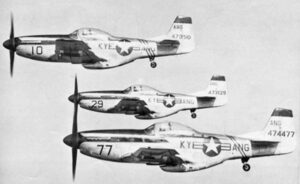Enceladus, one of Saturn’s most enigmatic and fascinating moons, has become a focal point for planetary scientists and astrobiologists in recent years. With its icy surface, geysers spewing water vapor, and the potential for a subsurface ocean, this small moon has emerged as a prime target in the search for extraterrestrial life within our solar system. This article will explore the unique features of Enceladus, its potential for harboring life, and the missions and research focused on unveiling its secrets.
Characteristics of Enceladus
Enceladus is the sixth-largest moon of Saturn, with a diameter of about 500 kilometers (310 miles). Its surface is composed primarily of water ice, giving it a highly reflective appearance. Enceladus is characterized by a diverse landscape, featuring regions of smooth terrain, vast plains, and areas marked by deep fractures and fissures known as “tiger stripes.”
A striking feature of Enceladus is its active cryovolcanism, with geysers spewing water vapor, ice particles, and organic compounds from its south polar region. These geysers are believed to be connected to a subsurface ocean beneath the moon’s icy crust. The presence of this ocean, coupled with the geothermal activity responsible for the geysers, suggests that Enceladus may possess the necessary conditions for life to exist.
Potential for Life on Enceladus
The discovery of a subsurface ocean and geothermal activity on Enceladus has led scientists to consider it as a possible location for extraterrestrial life. Life as we know it requires liquid water, an energy source, and the necessary chemical elements to form organic compounds. Enceladus appears to possess all three of these ingredients, making it an enticing target for astrobiological research.
The subsurface ocean of Enceladus provides the liquid water necessary for life, while the geothermal activity that powers the geysers could serve as a potential energy source. The discovery of organic compounds in the plumes of the geysers further supports the possibility that the moon contains the chemical building blocks for life.
Ongoing Missions and Research
The Cassini-Huygens mission, a collaboration between NASA, the European Space Agency (ESA), and the Italian Space Agency, was instrumental in uncovering the mysteries of Enceladus. Launched in 1997, the Cassini spacecraft provided a wealth of data on the moon’s geysers, subsurface ocean, and surface features during its mission, which concluded in 2017.
Although there are currently no active missions dedicated solely to the exploration of Enceladus, future missions and research initiatives are being considered to further investigate its potential habitability. Among these proposed missions are the Enceladus Life Finder (ELF) and the Enceladus Explorer (En-Ex). The ELF mission, proposed by NASA, aims to analyze the plumes of Enceladus in greater detail to search for evidence of life, while the En-Ex mission, proposed by the German Aerospace Center (DLR), would deploy a lander to directly sample the ice and plumes on the moon’s surface.
Life Beyond Earth
Enceladus has emerged as one of the most intriguing destinations in our solar system for the search for extraterrestrial life. With its subsurface ocean, geothermal activity, and the presence of organic compounds, this icy moon offers tantalizing clues about the potential for life beyond Earth. As ongoing research and future missions continue to explore the mysteries of Enceladus, we are not only expanding our understanding of the cosmos but also taking significant strides toward answering the age










